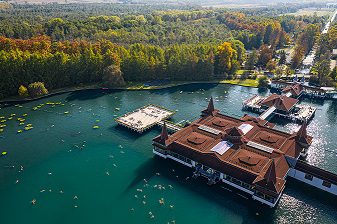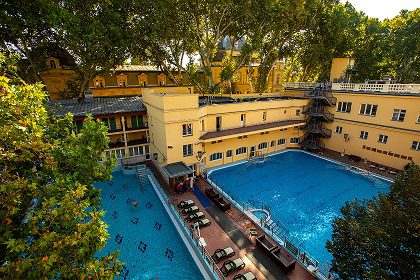 Geothermal Waters for Healing – The destination gives visitors a taste of the rich range of spa and recreational experiences that the country’s more than 200 spas offer all year round – including hydrotherapy treatments, medicinal water baths, mud baths, weight baths (unique Hungarian innovation), carbonic baths, underwater jet massage or underwater group therapeutic gymnastics.
Geothermal Waters for Healing – The destination gives visitors a taste of the rich range of spa and recreational experiences that the country’s more than 200 spas offer all year round – including hydrotherapy treatments, medicinal water baths, mud baths, weight baths (unique Hungarian innovation), carbonic baths, underwater jet massage or underwater group therapeutic gymnastics.
The Japanese and Icelandic waters are high in temperature but much lower in mineral content than Hungarian waters, while the Italian and French waters are high in mineral content but not nearly as warm as the Carpathian Basin, where the geothermal gradient is one and a half times the world average.

Lake Hévíz
Budapest is the only major city in the world with more than 100 thermal springs and wells, providing a unique source of thermal water that covers nearly four-fifths of the country’s territory. With plenty of options to choose from, among the popular rural destinations, Lake Hévíz is the world’s largest biologically active natural thermal bathing lake, with a 4.4-hectare bathing complex. Not only do they offer a place for recreation, relaxation and rejuvenation, but are housed in notable buildings with more than a hundred years of history.
Hungary has the fifth-best geothermal potential in the world after Japan, Iceland, Italy and France.
Medicinal Mud to Transform the Skin.
Offering an endless range of benefits, these treatments will not only stimulate circulation, leading to an accelerated metabolism but make the skin flexible and velvety soft, which explains why mud sourced from the lake is prominent in the beauty industry.
Many hotel spas in Budapest offer mud therapy complementary to thermal waters, mostly obtained from local waters in the Maros River or Lake Hévíz located near the venues. The active agents are absorbed through the skin, stimulating nerve endings – thus producing a muscle-relaxing and pain-relieving effect. As opposed to pain reliever medication, the treatment has a long-lasting effect, easing pains and aches for up to several months.
Travellers in search of rejuvenation and recreation should look no further than to treatments performed with Hungary’s warm medicinal mud.
Cave Therapy.
The Abaliget cave in Southern Transdanubia, the István Cave of Lillafüred in the north of the country, the Szemlő-hegy Cave of Budapest, the therapeutic cave of the city hospital in Tapolca and the Béke Cave in Jósvafő, the fifth longest underground system in Hungary, perfect for hikers.
Based on its therapeutic climatic effects, cave therapy can also yield improvements in the case of various respiratory diseases. Soluble minerals in the water dripping from the ceiling and walls of the caves have an anti-inflammatory and anticonvulsant effect when inhaled.
Decompress in Budapest’s most famous spas where history comes alive during each recreational experience:
- The Rudas Bath dates back to the Turkish era, and traditionally opens separately for men’s and women’s days on weekdays, welcoming 360,000 visitors a year.
- The Neo-Baroque and Neo-Renaissance Széchényi Bath is one of the largest monumental bath complexes in Europe, with 1.8 million visitors a year.
- The Gellért Bath, with its spectacular panoramic view of the Danube, is a national monument, partly thanks to its unique Zsolnay porcelain decorations. It is also home to the world’s first wave pool with 650,000 visitors a year.
- Aquaworld, which is very popular among families, is visited by 700,000 people a year and has a year-round aqua park with direct hotel access and a wide range of wellness services.
Written by: William Trevan



















